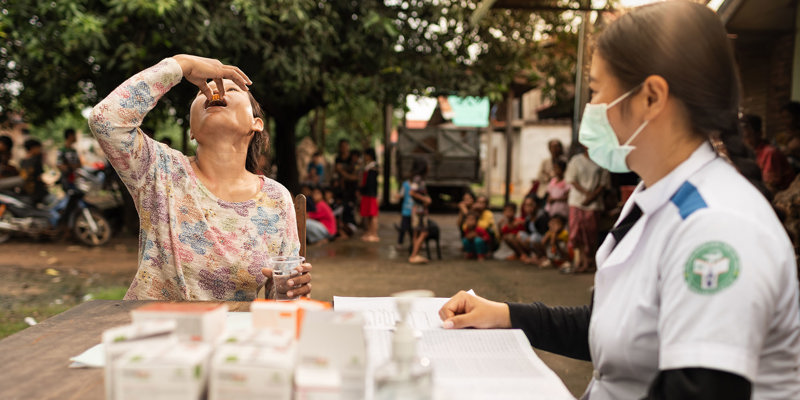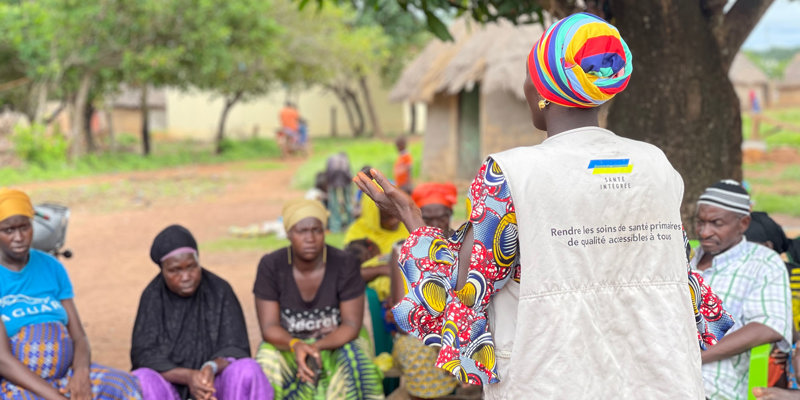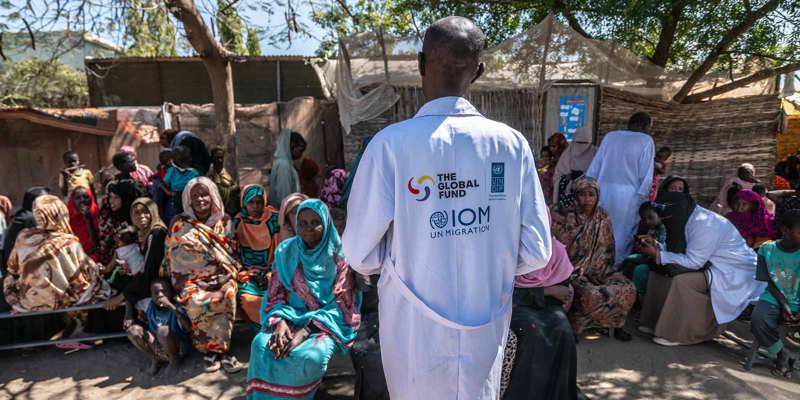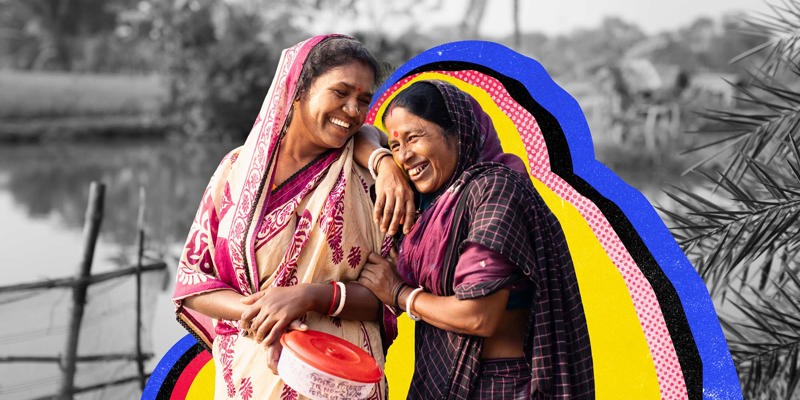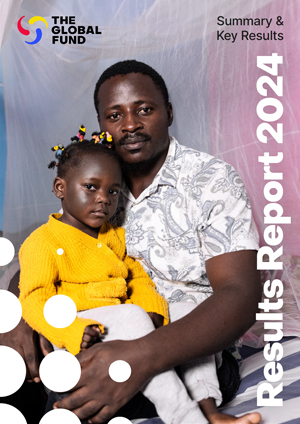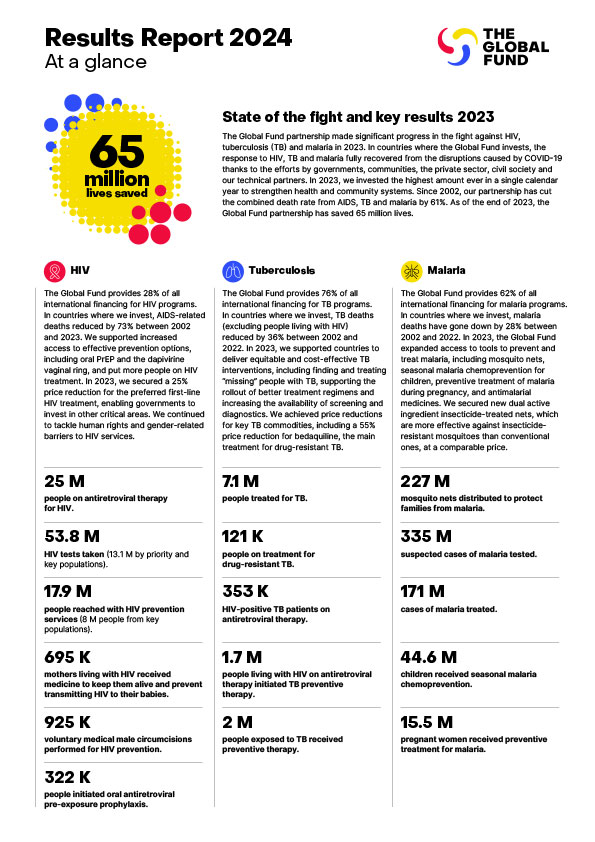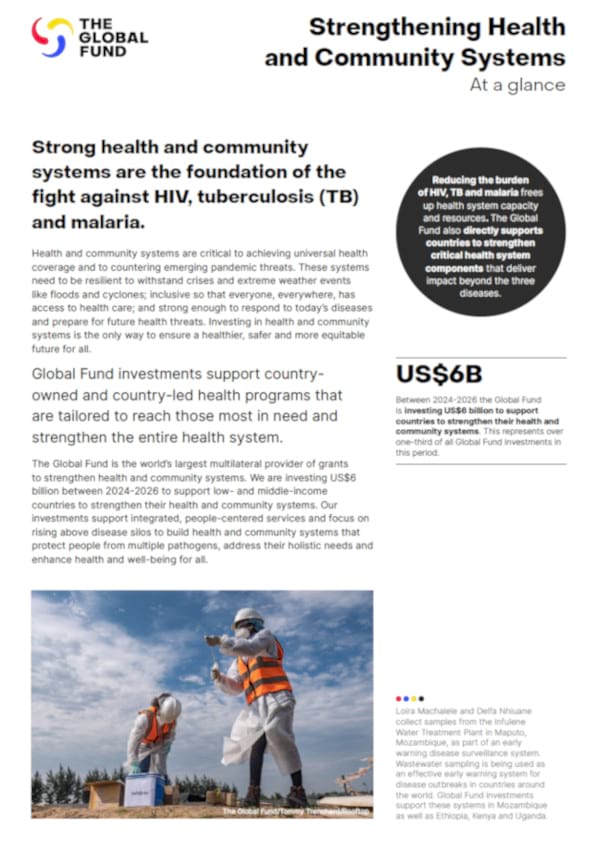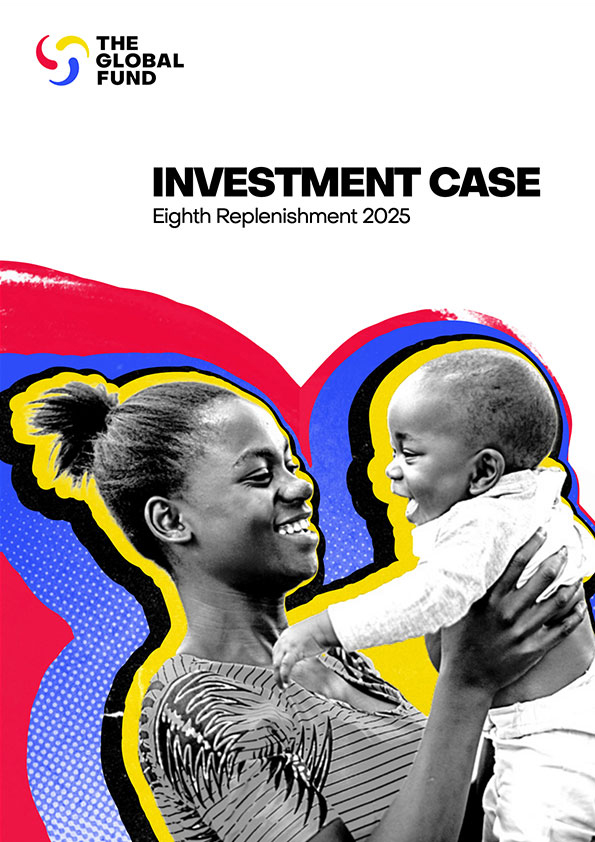

We Have Tools to Prevent HIV – Let's Make Sure They Reach Those Who Need Them Most
HIV prevention is changing, so the Global Fund’s approach to HIV prevention investment is changing too.
As we prepare for the next Global Fund funding cycle, we are working with programmers, researchers and advocates to adapt our HIV prevention investments to leverage new opportunities and to improve choices for people who need HIV prevention most.
This is vital if we are going to significantly reduce the number of new HIV infections.
Exciting research and development efforts are producing new prevention tools, and we have new ways of reaching more people with prevention.
Pre-exposure prophylaxis, or PrEP, a medicine that people can take to protect themselves from HIV, has been available in pill form for some time now, but many people still don’t have access to it. Its formulations are evolving, with the possibility of long-acting and injectable PrEP emerging. We also have PrEP in the form of a vaginal ring, the first effective, woman-controlled HIV prevention option ever produced.
We have U=U, or “Undetectable = Untransmittable.”
This means that when HIV-positive people know their HIV status and are taking HIV treatment consistently, the level of virus in their bodies becomes undetectable. When people have undetectable virus levels, they don’t pass HIV on sexually. This is having profound effects on HIV transmission patterns in many countries around the world.
We also have HIV self-tests, so that anyone can determine their own status without the need to visit a clinic, register their private information or queue in a line.
And we still have condoms and lubricants – the mainstays of prevention from HIV and other sexual transmitted infections and unintended pregnancies.
We have substitution treatment and clean injecting equipment, including syringes with lower “dead space” to make injecting safer. We also have an affordable cure for hepatitis C.
And we have the internet and social media. Many of us have devices in our hands that mean we can learn about HIV, HIV transmission and where to get prevention tools quickly and privately.
But despite these new options and better platforms to reach people, too many are not being reached with HIV prevention tools, or don’t have the power or autonomy to access and use them. And we won’t reach those people if we rely only on prevention models from the past.
HIV prevention needs to change, evolve and adapt to reach more people with new and existing HIV prevention tools. Services need to achieve greater scale.
For years, HIV prevention efforts have relied on networks of community-based organizations reaching people directly with condoms or clean syringes and informing people about HIV and the benefits of prevention, testing and treatment. Vast networks of grassroots organizations all over the world are reaching people in highly affected communities – in brothels, in drug dens, in bars, up mountains, under bridges, behind shopfronts and in shelters. This is the bedrock of HIV prevention, and it will continue to be the foundation.
But to reach larger numbers of people, we must support community organizations to expand their reach with internet-based communication, strengthen outreach through social media channels and find new ways of reaching more people who need prevention, especially young people. Community organizations must be supported to evolve and adapt their models so that they are at the frontline of HIV self-tests and PrEP delivery.
We must also harness the knowledge and deep understanding that these organizations have about the communities they work with to ensure the most effective HIV prevention strategies are being used to reach people most at risk.
For example, young women are often highly vulnerable to HIV and can lack the power to negotiate condom use. The vaginal ring enables women to have greater control over their bodies because they can insert the ring vaginally each month to significantly increase their protection from sexual transmission of HIV.
But community organizations, pharmacies, sexual health services and the national programs that plan HIV prevention must be supported to ensure young women actually have access to this tool.
HIV prevention and testing products, including the vaginal ring, should be easily available – not only at clinics, but in places that are much closer to where people are living, working, having sex and using drugs. Often these places are a long way from a clinic, with its limited opening hours, its registration system, its queue and its staff who might be prejudiced or breach privacy.
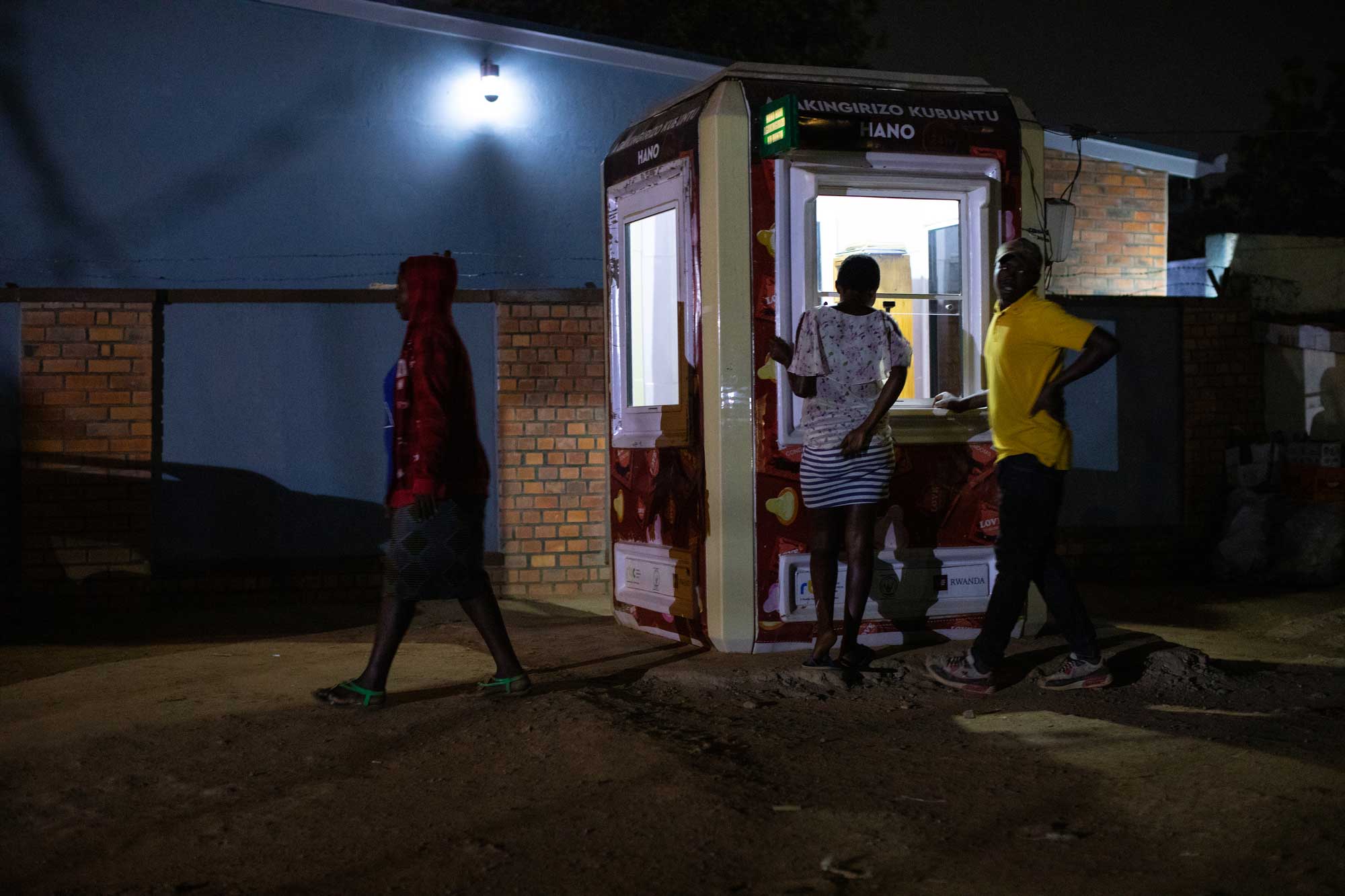
Young people stand in front of a kiosk that provides free condoms in a busy neighbourhood with numerous bars and night clubs, in Kigali, Rwanda.
The Global Fund/Vincent Becker
Now is the time to prioritize the “last mile” for HIV prevention and testing products: the bars, the vending machines, the kiosks, the pharmacies, the hook-up websites, the backstreets and the outreach services that ensure that HIV prevention options are available closer to where sex and drug use occur. And just like contraceptives, HIV prevention and testing tools should be easily available without a prescription at places like pharmacies.
Our vision for HIV prevention is investing to ensure that more people have HIV prevention options in their hands, when they need them, and the knowledge and power to use them.
Only then will we be able to end HIV epidemics in communities around the world.
